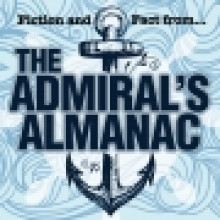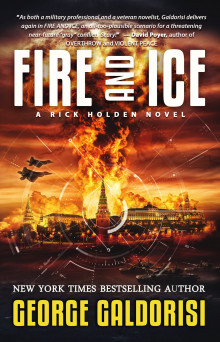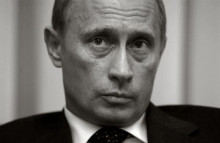Local author’s works imagine and prepare for the wars of tomorrow
By Samantha Bey
As red, white and blue buntings are hoisted on homes around town and Fourth of July festivities abound, July is an opportune time to reflect on all that this country has bestowed upon us and all that we hope to protect. One Coronado resident who counts the blessings of America – and then writes about how to shield them from potential threats, both real and imagined – is local author, Captain George Galdorisi. The Navy moved George, his wife Becky, and their two children, Brian and Laura, to Coronado in 1983 for what they expected would be another two-year assignment before they’d pack up and leave for their next duty station. Thirty-eight years later, now with grandchildren growing up here, it turns out their sojourn to Coronado was a (happily) permanent one.
Galdorisi ended up completing several tours at NAS North Island, Becky taught in the Coronado School District for over two decades, and Brian and Laura both graduated from Coronado High School. During his tenure in the Navy and despite having had a busy, seagoing career, Galdorisi managed to write more than a dozen books published by mainstream publishers. He has also written over 400 articles for professional publications and hundreds of conference papers for military, industry, academic and technical conferences. And now, as the Director of Strategic Assessments and Technical Futures at Naval Information Warfare Center Pacific, he has also managed to write two new books, one fiction and one non-fiction, that look to the future of warfare.
“Most publishers and editors give the same advice,” he says, “which is to ‘write what you know.’ When I write fiction, I draw from my operational experience as a naval aviator, as well as from my technical experience working with unmanned systems, big data, artificial intelligence and machine learning. This experience informs my novels.” Galdorisi began his writing career in 1978 with an article in U.S. Naval Institute Proceedings. He went on to write the New York Times bestseller Act of Valor, a novelization of the Bandito Brothers, as well as The Kissing Sailor, which proved the identity of the two people in Alfred Eisenstaedt’s famous photo of a sailor kissing a nurse in Times Square. His reboot of the Tom Clancy Op-Center series includes three consecutive New York Times bestsellers: Out of the Ashes, Into the Fire and Scorched Earth. His latest fiction project, published by Braveship Books and is a series of thrillers about fictional character Rick Holden: The Coronado Conspiracy, For Duty and Honor, and the recently released Fire and Ice. “Fire and Ice is a thriller focused on the political-military tensions created by a modern-day Russia at its vindictive worst,” Galdorisi explains. “Vladimir Putin emerges as a central character who uses the fulcrum of Belarus to hold Western Europe hostage by strangling their oil and gas supplies.” Galdorisi says that the novel poses the plausible and highly realistic question: Can Putin and his rogue nation be thwarted through the combined efforts of EU and US political and military might? Perhaps most striking about Fire and Ice is that fictional events portrayed in the book appear to have come true in 2021. The events described in the novel include a ship completely blocking the Suez Canal, a cyber-attack on America’s oil and gas infrastructure, and Russia bullying and eventually invading a neighboring nation. Does Galdorisi have a crystal ball? Or is he just a very lucky guesser? “One of my childhood heroes, Yogi Berra, said ‘It’s difficult to make predictions, especially about the future.’
When I write fiction, I write about things that worry me about future warfare, and then I try to intuit what wars will be like in years hence,” explains Galdorisi. It seems that so far both his worries and his intuition are pretty spot on. He notes that all three of his most recent novels, The Coronado Conspiracy (which, aptly named, has a firm anchor in this city) For Duty and Honor and Fire and Ice, are contributions to an increasingly popular genre commonly known as FICINT, which is short for fictional intelligence. “This means imagining future warfare scenarios based on the reality of high-end combat and real-world intelligence, not fantasy,” says Galdorisi. “My goal,” he says, “is to leave the reader wondering not if, but when, these kinds of scenarios will play out in our lifetimes.” Galdorisi’s primary writing passion is novels, but he also feels a sense of duty to share his knowledge in the nonfiction arena. Earlier this year he released a nonfiction project, AI at War: How Big Data, Artificial Intelligence and Machine Learning are Changing Naval Warfare. “Along with my co-author, Dr. Sam Tangredi, another former naval officer and Coronado resident, I wrote this book because we believe that it is important for Americans to understand how inserting big data, artificial intelligence and machine learning into military weapon systems will change warfare as we know it,” he explains.
Galdorisi says writing nonfiction in addition to fiction “definitely helps” when it comes to the believability of his novels. “Starting with Act of Valor, continuing through the Tom Clancy Op-Center books, and now the more recent Rick Holden thriller series, these novels wouldn’t be believable if the technical details—especially technologies that will impact future warfare—were not dead-on right.”
When it comes to the new FICINT genre, Galdorisi explains some readers may feel troubled that people outside of the Pentagon were writing about the future of warfare. He, however, feels differently. “Many commentators accuse the U.S. military of preparing for the last war. There may be some truth to this criticism. However, there is a movement afoot to better prepare for the wars of tomorrow. Throughout the 20th century, planning for tomorrow’s conflicts occurred exclusively within the walls of the Pentagon. With a well-known adversary during the Cold War this was an acceptable strategy. However today, with a plethora of new threats, this is no longer the case.”
Galdorisi explains that for years, writers imagined future warfare, but U.S. officials responsible for the security and prosperity of America either disregarded these stories or criticized them as unhelpful to crafting a coherent national and military strategy. He says this has changed in the 21st century. “The U.S. national security community has now embraced this new FICINT genre as a useful instrument to intuit how tomorrow’s wars will be fought.”
Even with all the potentially looming warfare to write about in real life, Galdorisi’s future writing projects will focus on his fi ction. “I need to get Rick Holden and his friends in trouble again, so I am working on my next novel, as well as on another book on the impact of artificial intelligence on future warfare. That should keep me off the streets and out of the saloons for a while,” he says with a laugh. Other than writing books that envision what future warfare will be like, George likes nothing more than connecting with readers. You can follow him on Facebook and Twitter, and learn more about his books, blogs, and other writing on his website, georgegaldorisi.com especially his “Writing Tips,” — which offers useful advice for all scribes, from established authors to future best-selling writers.











 George Galdorisi is a career naval aviator and writer, specializing in “FICINT,” combining fiction writing with current intelligence to envision future warfare. He began this journey almost a decade ago with the New York Times best seller, Tom Clancy Presents: Act of Valor (Penguin), the novelization of the Relativity Media number-one rated movie. This was followed in rapid succession by three more New York Times best sellers in the rebooted Tom Clancy’s Op-Center series: Out of the Ashes, Into the Fire, and Scorched Earth (St. Martins). Continuing in the FICINT tradition, his three most recent thrillers are The Coronado Conspiracy, For Duty and Honor and the just-released (March 2021) Fire and Ice (Braveship Books).
George Galdorisi is a career naval aviator and writer, specializing in “FICINT,” combining fiction writing with current intelligence to envision future warfare. He began this journey almost a decade ago with the New York Times best seller, Tom Clancy Presents: Act of Valor (Penguin), the novelization of the Relativity Media number-one rated movie. This was followed in rapid succession by three more New York Times best sellers in the rebooted Tom Clancy’s Op-Center series: Out of the Ashes, Into the Fire, and Scorched Earth (St. Martins). Continuing in the FICINT tradition, his three most recent thrillers are The Coronado Conspiracy, For Duty and Honor and the just-released (March 2021) Fire and Ice (Braveship Books).